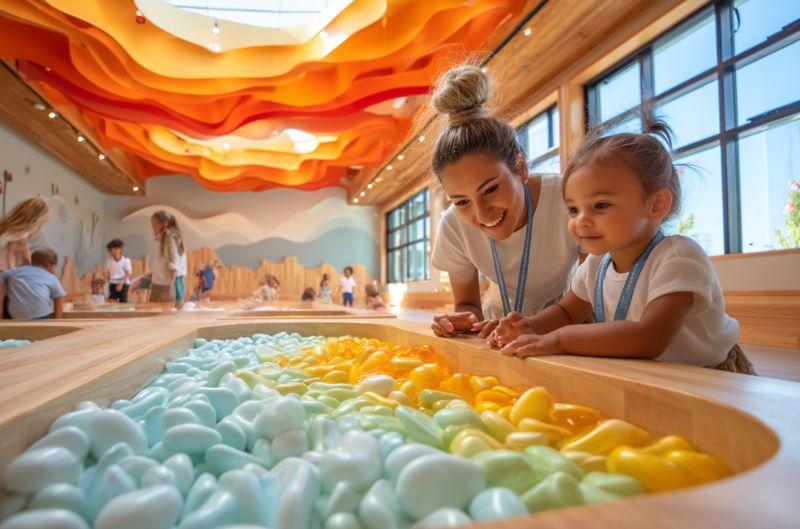
Ways to Inspire Intrinsic Motivation in Preschoolers
Author: Austin Stanfel
Fostering intrinsic motivation in preschoolers is a powerful way to nurture lifelong learners who are curious, resilient, and self-driven. Intrinsic motivation—the inner desire to engage in activities for one’s own sake, out of interest or enjoyment—lies at the foundation for academic success, creativity, and emotional well-being. Here is how parents, caregivers, and educators can inspire this essential quality in young children.
Understanding Intrinsic Motivation
Intrinsic motivation is driven by internal rewards, such as satisfaction, curiosity, or a sense of accomplishment, rather than external incentives like praise, stickers, or treats. Preschoolers are naturally inclined toward intrinsic motivation; they learn to walk, talk, and explore their world because it is rewarding. The challenge is to sustain and nurture this drive as they grow.
Key Principles for Fostering Intrinsic Motivation
1. Support Autonomy and Choice
- Offer Choices: Allow preschoolers to decide about their activities, such as choosing between drawing, building blocks, or which book to read. This sense of control fosters autonomy and ownership over learning.
- Encourage Self-Direction: Let children lead in play and exploration, following their interests and curiosities.
2. Focus on Effort, Process, and Progress
- Praise Effort, Not Just Outcomes: Highlight children’s hard work and persistence, rather than labeling them as “smart” or only celebrating success. For example, say, “You worked hard on that puzzle!” instead of “You are so good at puzzles.”
- Point Out Progress: Break tasks into smaller steps and celebrate milestones, helping children see their growth and improvement.
3. Foster Competence Through Appropriate Challenges
- Provide Achievable Challenges: Present tasks that are just above the child’s current skill level to promote a sense of mastery. Success in overcoming these challenges boosts confidence and motivation.
- Encourage Problem-Solving: Let children try to solve problems independently before stepping in, supporting their sense of competence and accomplishment.
4. Create a Safe, Supportive, and Joyful Environment
- Model Curiosity and Enthusiasm: Demonstrate your love of learning and curiosity. Children are more likely to emulate adults who show passion and perseverance.
- Embrace Mistakes as Learning Opportunities: Normalize making mistakes and encourage children to see them as part of the learning process.
- Build a Supportive Atmosphere: Ensure children feel safe, respected, and valued, so they are comfortable taking risks and exploring new ideas.
5. Encourage Exploration and Play
- Value Play-Based Learning: Preschoolers learn best through play, naturally engaging their intrinsic motivation by making learning fun and meaningful.
- Follow Their Interests: Observe what excites and engages each child, and incorporate those interests into activities and discussions.
6. Limit Extrinsic Rewards
- Use External Rewards Sparingly: Over-reliance on stickers, treats, or praise for every achievement can undermine intrinsic motivation, making children dependent on outside approval. Instead, celebrate effort and self-satisfaction.
- Celebrate Growth and Self-Discipline: Shift the focus from the result (like a finished drawing) to the growth, commitment, and joy experienced.
7. Cultivate Connection and Relatedness
- Build Meaningful Relationships: Children are more motivated when they feel connected to caregivers and peers. Sharing in their interests and showing genuine enthusiasm strengthens this bond.
- Encourage Collaboration: Group activities and cooperative play foster a sense of belonging and relatedness, which supports intrinsic motivation.
8. Teach Goal Setting and Reflection
- Set Personal Goals: Help children set achievable goals and reflect on their progress. This builds self-awareness and a sense of agency.
- Encourage Dreaming Big: Support children in imagining what they want to achieve, nurturing long-term motivation and vision.
9. Practice Gratitude and Mindfulness
- Foster Gratitude: Encouraging children to notice and appreciate positive experiences can help them focus on the joys of learning and overcome setbacks with resilience.
- Model Mindfulness: Be present and attentive during shared activities, which helps children savor the learning process.
The Role of Adults: Modeling and Environment
Children learn intrinsic motivation not just from what adults say but also from what they see adults do. It is crucial to model curiosity, perseverance, and a positive attitude toward learning. Creating an environment that values autonomy, competence, and connection—the core principles of Self-Determination Theory—has been shown to enhance intrinsic motivation in children significantly.
Conclusion
Inspiring intrinsic motivation in preschoolers is about nurturing their natural curiosity, supporting their autonomy, and celebrating their unique growth journeys. By focusing on process over product, offering meaningful choices, and creating a safe, joyful environment, we can help young children become lifelong learners driven by their love of discovery and achievement.

